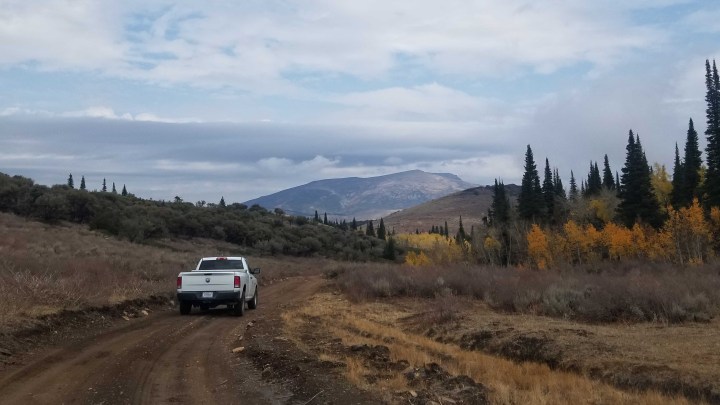
Prescribed burns can help reduce wildfire threat in the West
Prescribed burns can help reduce wildfire threat in the West


On a dirt road in the Albion Mountains of southern Idaho, Stacy Tyler points to a hillside slated for prescribed fire.
“This one’s a couple of thousand acres. The one just down the hill is only a couple of hundred acres,” said Tyler, who helps plan prescribed burns for the U.S. Forest Service.
That’s nearly 3.5 square miles altogether. Tyler said the area likely hasn’t burned in around 100 years, give or take.
Federal agencies used to try to put out all fires to reduce risks to people. But now, unburned forests dried out by warming weather are fueling unprecedented, extreme blazes.

Fires lit now, in cool, controlled conditions, could dampen more destructive ones later on. And prescribed burns in this location can reduce overgrown vegetation that’s crowding out the iconic aspen tree.
“Without repeated disturbance, meaning most likely fire events … the aspen are eventually going to go away,” she said.
Tyler said trees in that area aren’t worth much to timber companies. So the Forest Service plans to burn most of it. That gives aspens space to regrow and provides better habitat for species like mule deer.
But ranchers are also grazing cattle on that land, and there’s a history of distrust between federal agencies and ranchers in the region.
Tom Ottley ranches near that planned burn area in Idaho. He said it can be tough to find a middle ground with public officials at times.
“We learn from experience here, and we think our ways are the right way,” he said. “Then you got the guys that are in the books, and this is what the book said … they just battle.”
Ottley was one of many people who sat down with the Forest Service and other stakeholders to talk about the planned burns.
“Initial thing for us was, ‘A fire? No way. We can’t have a fire. There’s just no way we can have a fire because we’ll be off for three years,’” he said.
That is, three years when their cattle won’t be able to graze there. He was also concerned about fire escaping. Over the years, several studies have found only around 1% to 2% of managed forest fires escape and threaten surrounding areas. But Ottley had his reservations — until he attended a meeting where he said someone from the Forest Service both listened and explained the science well.
“I felt when I came out of there that they were trying to resolve both sides of the situation, and I think they do need to do some management of some sort to reduce fuels,” he said.
They didn’t agree on everything, he said, but found enough common ground to move forward.
A 2006 Forest Service study found that about 80% of people are OK with prescribed burns. But groups wary of the federal government or those who’ve been near burns that escaped a prescribed area before will likely want to talk through their concerns.
That’s something the new Forest Service Chief Randy Moore said the agency plans to do.
“We have to spend some of our effort, our energy and time talking about fuel treatments,” Moore said.
He wants more prescribed burns, too. A lot more.
“Our goal is to increase prescribed burning threefold, if not even more,” he said.
Moore paused prescribed burns this summer, though, citing strained firefighting resources and extremely dry conditions.
A group of fire and forest ecologists sent a letter to Moore, arguing that was the wrong call, since it didn’t allow fires to burn when local areas had good conditions.
Regardless, there is extensive scientific research that says we need more prescribed burns now. Without them, we’re expected to face larger, hotter, more extreme wildfires all around the West.
There’s a lot happening in the world. Through it all, Marketplace is here for you.
You rely on Marketplace to break down the world’s events and tell you how it affects you in a fact-based, approachable way. We rely on your financial support to keep making that possible.
Your donation today powers the independent journalism that you rely on. For just $5/month, you can help sustain Marketplace so we can keep reporting on the things that matter to you.











